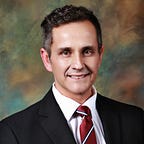Restoring Old Fat A.K.A. Cellulite
Have you ever wondered why the fat under the skin on a younger person oft times looks much better than the fat under an older person’s skin? One thing we know for sure is we appreciate dimples in our upper set of cheeks much more than we do the lower one! We know the culprit is cellulite, but what causes cellulite?
Cellulite is to fat like the wrinkle is to skin. If we take care of our skin, the elasticity will be better for much longer and if we keep our subcutaneous (under the skin) fat healthy, it will stay much smoother and help us avoid what we know as cellulite.
Men get cellulite too; however the reason cellulite is not as obvious in men, is most men have thicker skin, the fat is stored a little deeper, and fatty deposit areas differ from men and women (this is what makes our shapes different from each other). Men are more apt to see cellulite form around the neck or abdominal areas.
The thing that is frustrating about cellulite, is many times during weight loss, it becomes even more obvious, due to loss of healthier surrounding fat that may have been covering it up. This is because our body is going to pull from the most accessible energy source and if it doesn’t have a good blood supply our body’s capability of fat transport from that area is not as good. Once we know what can make the older fat more accessible for our body to break it down for energy, we should then know what to do to get rid of our cellulite. Cellulite is like broken fat, so I like to think of this as fat repair…
Repairing broken fat: cellulite is blood and oxygen starved fat. Oxygen is the most vital nutrient to life, and we know that blood is the transport system that delivers oxygen and the other nutrients that keep our body parts and its systems healthy!
Building a better blood flow: it is reasonable to assume, (if we get a better blood supply to our fatty deposits) that we should be able to burn fat from these areas better. Fat cells are like cans of food in that they both hold calories. Increasing blood flow would be like clearing a path in our storage pantry so we can get to some food that has been stored for a while and hasn’t been in rotation like the cans of food in the front. Cellulite is like the dusty cans of food stuck behind the new and fresh cans of food.
Building muscle: this is a great way to increase blood flow to an area, so strength training and building muscle in the cellulite problem areas should help with the blood flow and the subsequent oxygenation of these areas. Building muscle keeps body parts from looking flabby as well, (fat simply does not look so bad if there is toned muscle underneath). When we go on a crash diet, the loss of muscle can cause areas of our body to lose underlying firmness, oft times the upper layer of subcutaneous fat and skin simply mirrors what is happening underneath. Building muscle, through strength training and a good diet will help firm these areas.
Heat: heat will encourage blood flow into an area. Applying heat to a problem area of cellulite should encourage blood flow and increase our capability to use it as a source of energy.
Skin brushing: this is a good way to encourage blood flow into an area and is one that I certainly advocate. Simply get a brush that has plastic balls at the end (so it will not scratch or scuff your skin) and work this area in a circular motion periodically. You do not want to overdo this as this can make your skin hurt if you do too much at one time.
A combination of the 3 above methods will work great along with an antioxidant rich diet of fruits and vegetables and plenty of water!
This article was not to help figure out a new way to burn fat, but rather to promote either the healthy upkeep of the fat or restoring health to our fat cells. Remember, healthy fat under our skin helps keep our skin looking healthy, smooth, and young, after all, isn’t our subcutaneous fat a big part of what our skin is planted on?
